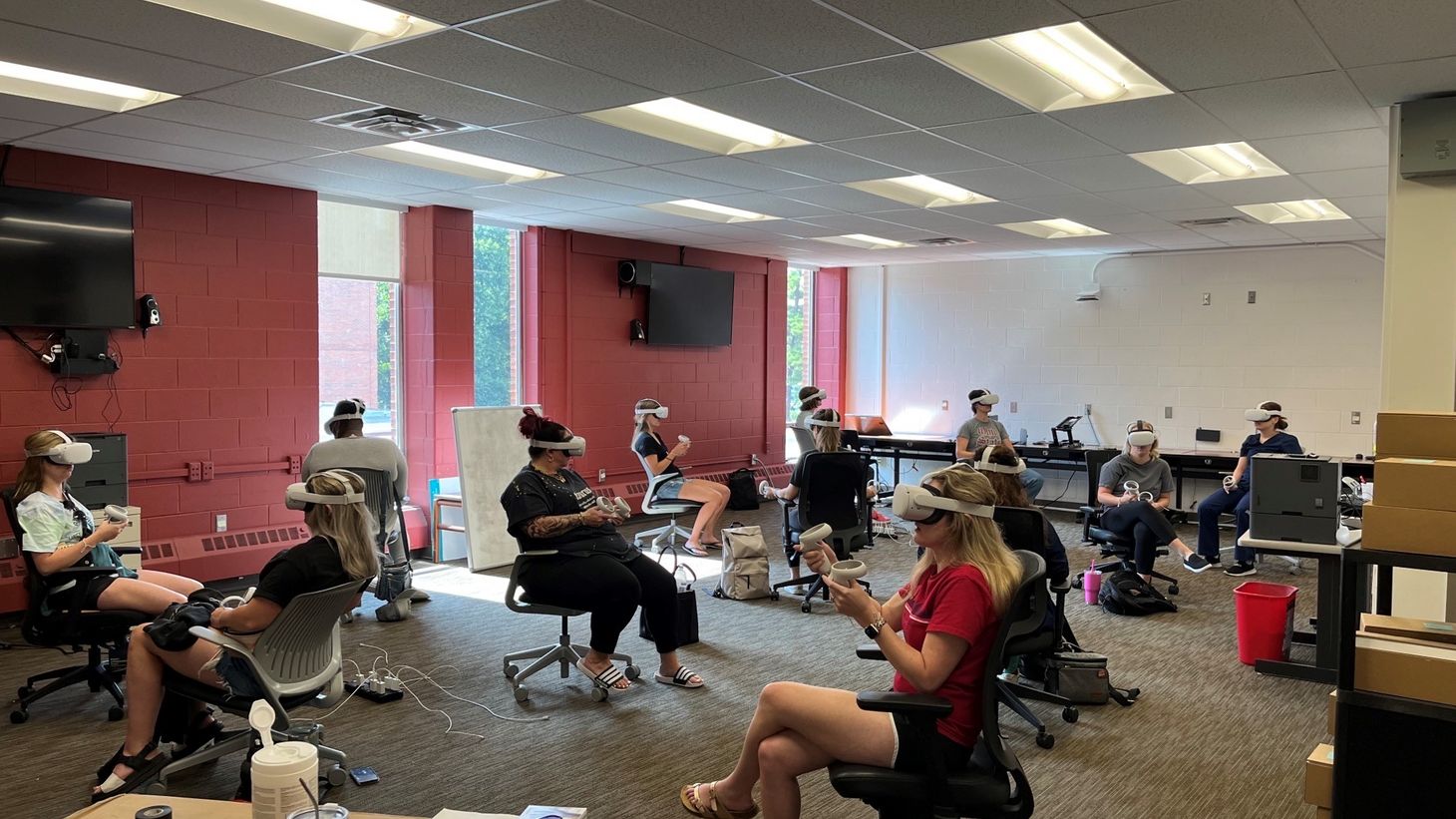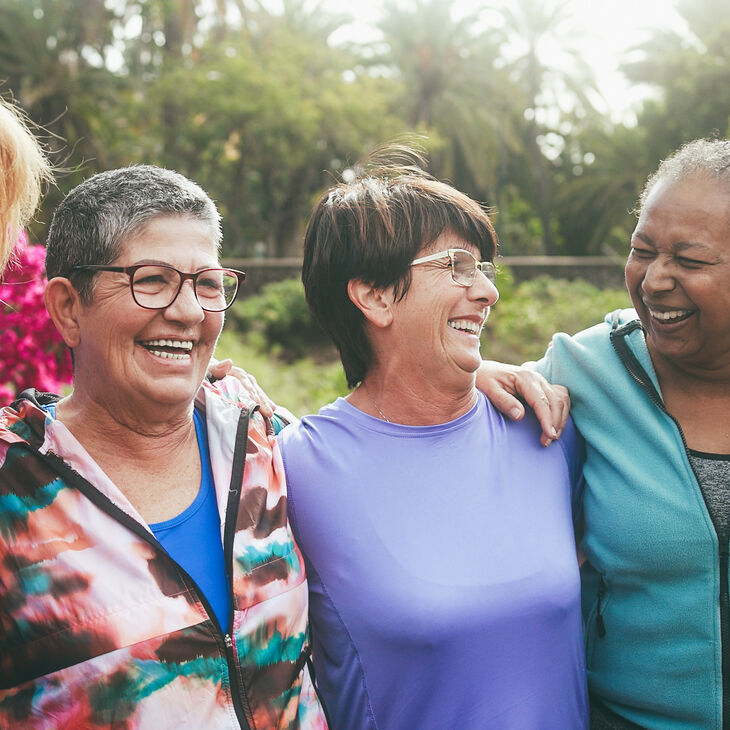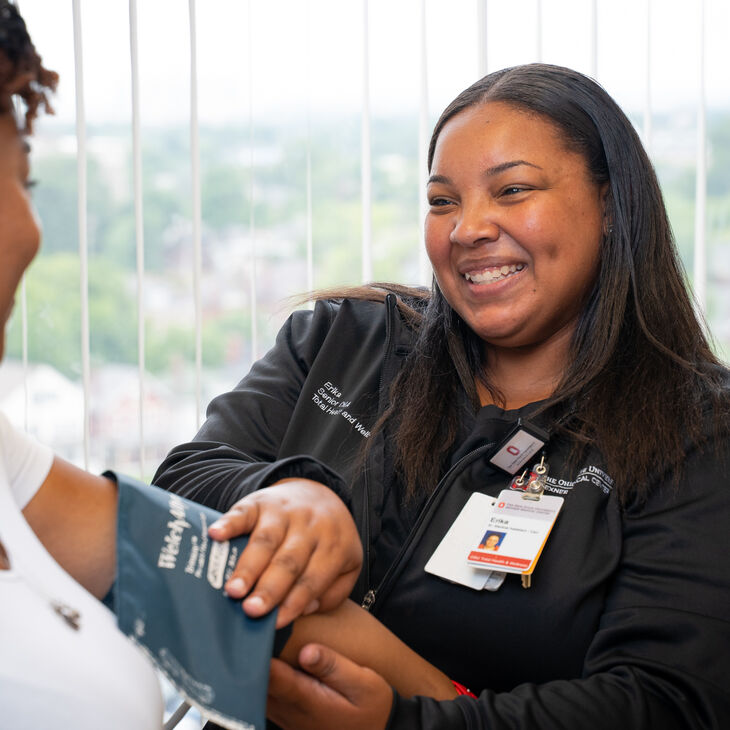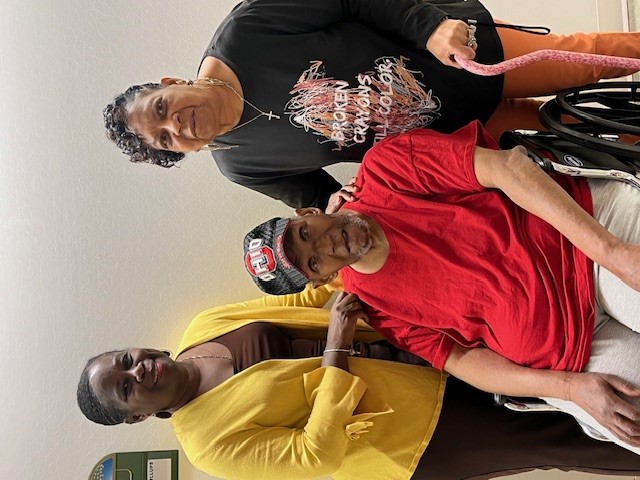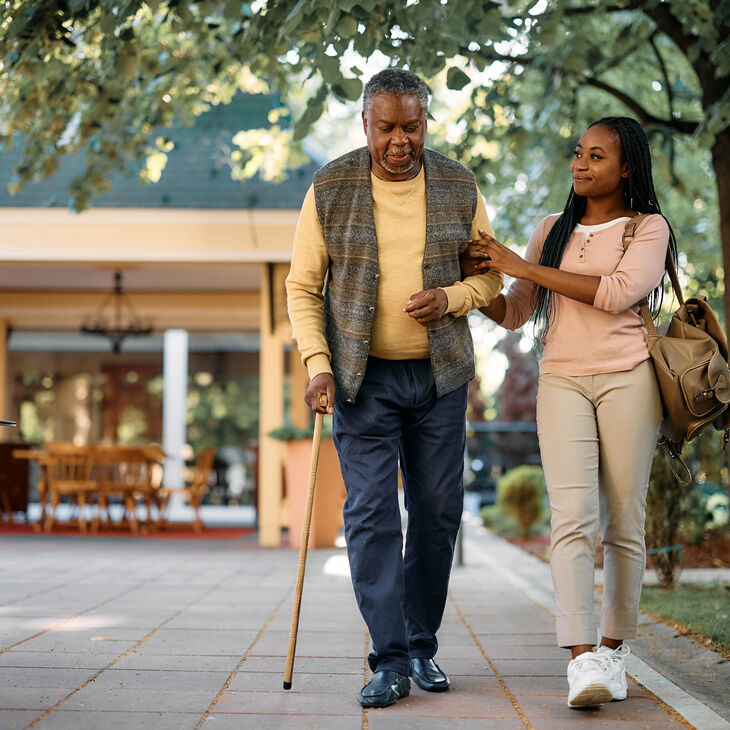by Dr. Michael Ackerman and Dr. Stephanie Justice
Reinvention. Reimagination. Disruption.
All of these words are associated with changing how we do things in order to improve upon what we do. In the world of nursing education, that means changing how we deliver instruction, promote experience and build confidence in our students so that they’re practice-ready.
And it starts with a headset.
Our Ohio State University College of Nursing received an American Nurses Foundation “Reimagining Nursing Grant” for an innovative pilot program, “Disrupting nursing education using extended reality (XR), artificial intelligence and machine learning,” aimed at reimaging the existing system of preparing pre-licensure nursing students.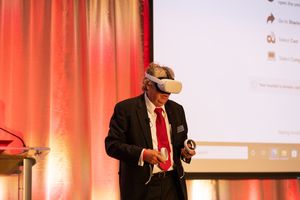
By utilizing technology-enabled learning tools, we are able to observe the learner’s knowledge, skills, values and attitudes and effectively enhance practice skills and decision-making for the learner. These emerging extended reality-based systems create engaging, innovative, highly-effective and scalable clinical learning experiences that offer students the opportunity to enhance and accelerate their learning through XR, aided by machine learning and artificial intelligence. XR does not replace traditional skills training or high-fidelity simulation; students will continue to participate in hands-on experiences. What XR simulations do is increase the number of experiences for each learner. Students will complete simulations as the primary nurse and can repeat the simulation multiple times.
A variety of XR methodologies and products are being utilized to create a bridge between academic and practice environments. The XR technology includes clinical scenarios which include things such as clinical decision-making, pharmacological and pharmacokinetics principles and skills-based interventions. Additionally, life skills are incorporated including therapeutic communication, patient specific history and concerns and data collection pertinent to patient care while addressing social determinants of health. The patient data-based approaches along with life skills all create scenarios that address approaches with decision-making. Student learners will approach the scenarios with a keen sense of using the technology-enabled learning tools both to create an immersive experience and to consider how they will incorporate technology into decision-making.
This pilot employs virtual reality technology as well as mixed reality, essentially both screen-based and headset-based immersions. The VR programs selected for this pilot were evaluated for content and accessibility to allow students who experience cybersickness (nausea, headache, blurry vision) in VR to complete the same scenarios as an individual on a computer. Feedback on patient care simulations is provided to each student at the end of the simulation, along with rationale and links to patient care guidelines. Students can repeat the simulation as many times as they want because they can access the program on a computer or headset and can log in from anywhere.
In the first month of operation, students completed individual virtual simulations in several courses:
- Community health students experienced homelessness in the VR headset by entering the tent of a homeless woman and viewing her lived experiences, interacting with the few keepsakes she still possesses and being present in her current living situation. These students also completed a screen-based social determinants of health (SDOH) scenario where they worked with one of four individuals with a variety of backgrounds.
- Students in several medical/surgical courses experienced patient care simulations both in the headset and on the screen caring for patients across the lifespan.
- Sophomore students participated in cardiac and respiratory assessment tutorials.
- Junior students cared for a young child or a pregnant woman experiencing complications.
- Graduate entry students performed a cardiac arrest scenario.
In less than a month, students completed 1277 individual medical/surgical simulations, 40 homelessness simulations and 40 SDOH simulations for a total of more than 290 hours of individual simulations.
The junior medical/surgical course used the headset to cast or project the simulation onto the screen in the classroom. The student in the headset was guided by her classmates to determine the course of action and which skills and procedures to perform. This turned the experience into a group activity instead of an individual simulation. The simulation was completed a second time to improve the group performance.
All pre-licensure students will be exposed to more XR simulations as the academic year continues. Additional medical/surgical patient care scenarios will be completed, as well as simulations focusing on communication skills to prepare students for practice by learning job interview techniques and how to navigate difficult conversations.
Michael Ackerman, PhD, RN, FCCM, FNAP, FAANP, FAAN is professor of clinical nursing, director of the Master of Healthcare Innovation degree program and director of the Center for Healthcare Innovation and Leadership at The Ohio State University College of Nursing. Stephanie Justice, DNP, RN, CHSE is assistant clinical professor at The Ohio State University College of Nursing. She is one of 16 simulation educators from across the country selected for the National League for Nursing’s year-long Leadership Development Program for Simulation Educators.
Student testimonials on using XR/VR in the classroom
How has this changed your practice? How will you approach this same kind of patient differently in the future?
“I think this really opens my eyes up to see how real-life this decision-making is and how it is very likely that I can be as hesitant as I was in real life as I was in this simulation. I think I will approach this same kind of patient differently in the future by having a better understanding of what is necessary to do when someone’s having a seizure alongside the stuff I did for Katie.”
“I now know more about what is expected of me as a nurse.”
“This has continued to show how this can be implemented into my daily practice. It also shows how I can learn these things to carry into my practice (check my implicit biases, hospitality, etc.)”
What did you learn? What was your greatest takeaway moment?
“I learned how to take charge and how I could do better at leading as a nurse in the future.”
“I learned how to react with a distressed parent. My greatest takeaway moment was guiding the mother to put the child down so my team and I could begin giving CPR. Seeing a distressed mother really taught me that I need to keep my composure not only for the patient’s sake, but for the parents as well.”
“It was really great practicing the adult cardiac arrest algorithm. Doing it helped make it more real and intuitive. It was an a-ha moment to see it in practice.”
What would you do differently?
“I did a lot differently between my first attempt and my second attempt, including giving meds at different times after the shock and having a better order of procedures.”
“I am glad that I was able to repeat the scenario multiple times because it helped me learn from my mistakes and apply my knowledge. In the future, I would try my best to remain calm on the first go-around because I could tell that being flustered made the experience stressful.”
“This has changed my practice, because I will now always come prepared, use delegation and prioritize effective communication with my team members during a code situation. These things are all crucial, and I plan on approaching this same kind of patient in a more prepared and educated way in the future.”
How did it feel (being in VR)?
“Being in the patient room, feeling like I was actually there, felt real.”
“I thought it was so cool. I feel more confident in doing assessments and knowing where things are.”
“It was very realistic … because you could do all these things through the visualization. I thought it was a good learning experience because it told you what you did well and wrong.”
“[In the homelessness scenario], tt was really sad to watch how she was just trying to pursue her dreams and everything was ripped away. I was really amazed by the whole experience and felt really moved by how emotional she was at the end when they were ripping apart the contents of her tent.”
Additional comments:
“Make the VR component mandatory by offering more devices at the [College of Nursing]. Completing this in VR took it to an entire different level.”
“I really enjoyed doing this VR simulation. It was interesting to work at the bedside as a character to gain more experience. I’m very excited for future VR.”
“I felt like it was a useful tool for letting me as a student learn in a safe environment.”

